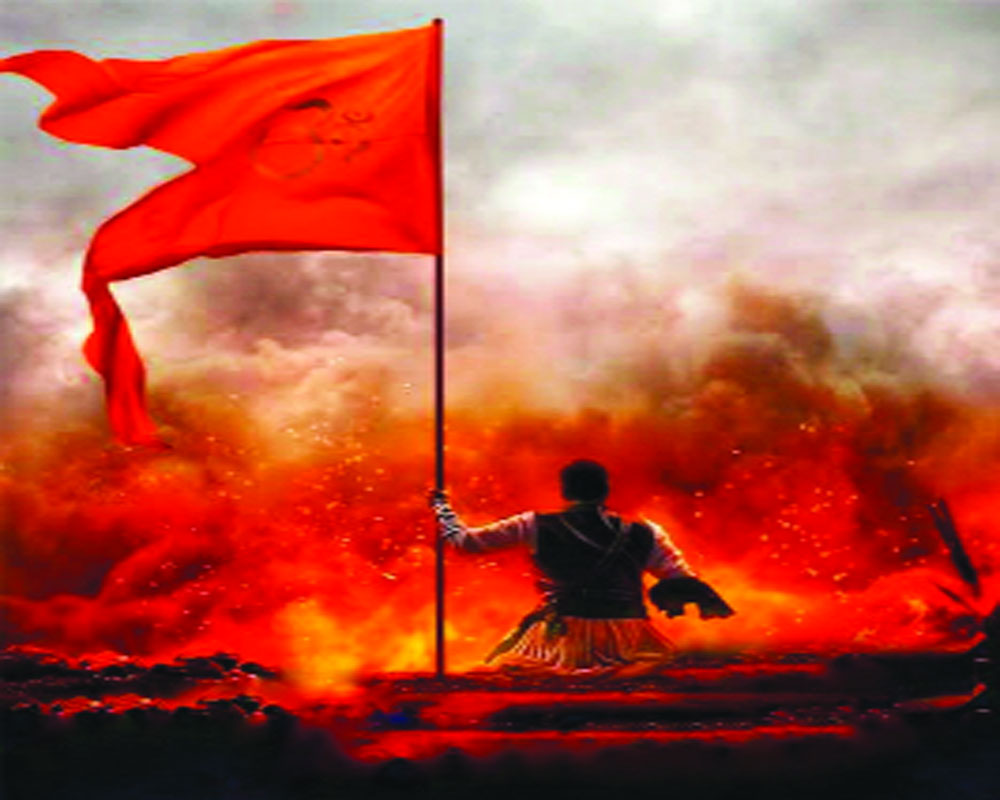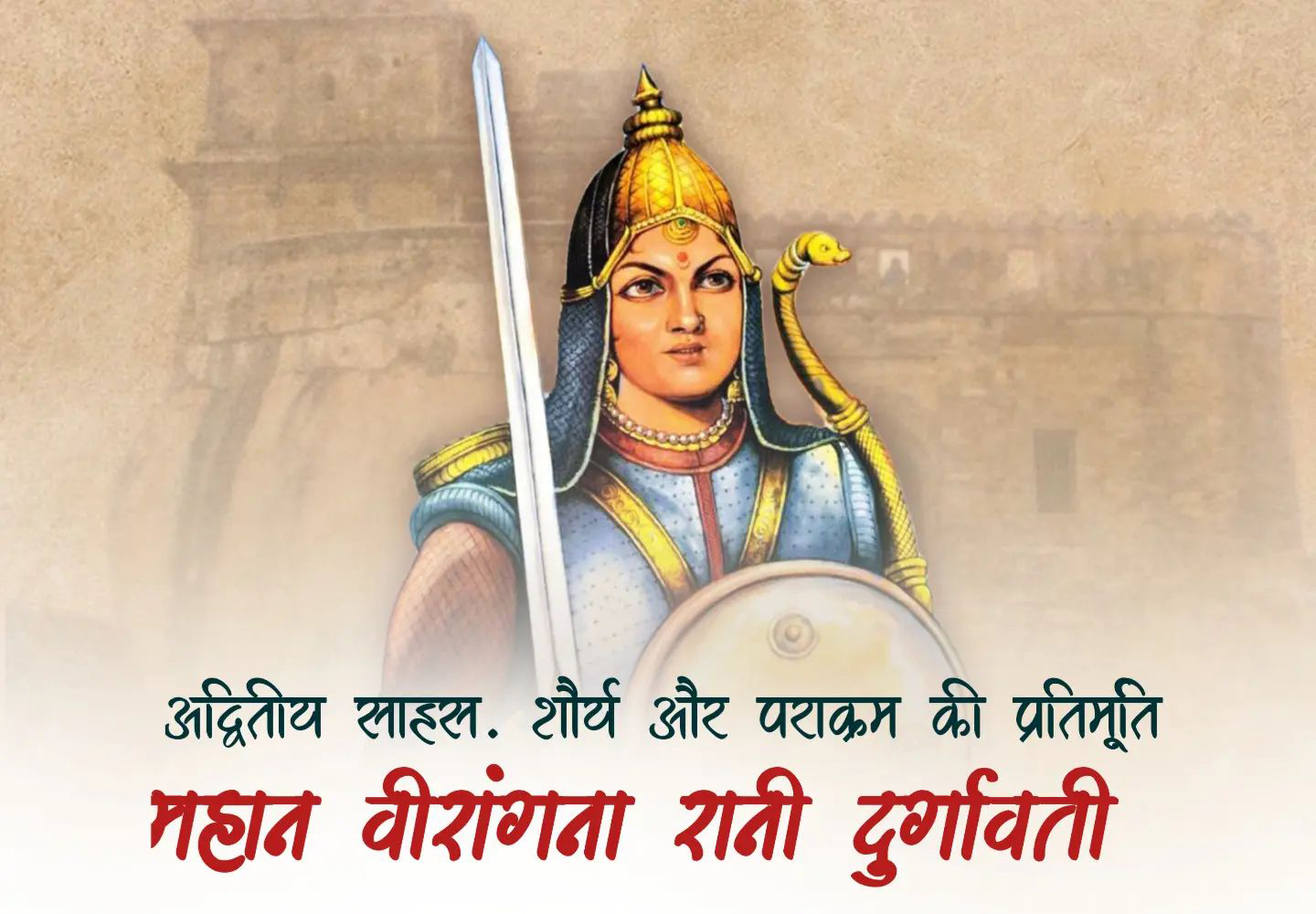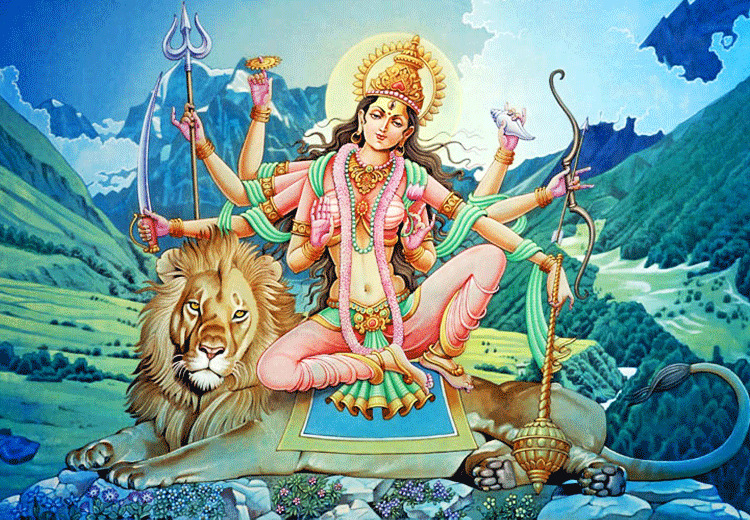By Dr. Bhupendra Kumar
In Indian tradition, “Ashwin Shukla Dashami” is considered to be the day of eternal energy, Shakti Puja and victory. This Muhurta is considered to be the best time to start any auspicious, Satvik and nation-proud work. This celebration of Vijayadashami is a symbol of the victory of divine powers over demonic powers.
It was on the day of Vijayadashami that in the Satyug, the divine power in the form of Bhagwati Maa Durga killed Mahishasur. In the Tretayug, Lord Shri Ram destroyed the demonic powers of the evil Ravan by taking the help of the forest dwellers, organizing them and building a bridge. And, similarly, in the Dwaparyug, the divine powers destroyed the demonic powers under the guidance of Shri Krishna. In the Kalyug, the tradition of crossing the border was also started on this holy day by Chhatrapati Shivaji Maharaj, who established the Hindu kingdom with the self-respect of Hinduism even in adverse circumstances. And, both these festivals, Ramleela and Durga Puja, are celebrated with a view to keep the sacred memory of this victorious day alive in the public consciousness. There is also a tradition of weapon worship on the holy day of Vijayadashami. On this day, after 12 years of exile and 1 year of incognito, the Pandavas worshipped their weapons and wore them again.
On the day of Vijayadashmi, the most revered first Sarsanghchalak Dr. Keshav Baliram Hedgewar ji had founded the Rashtriya Swayamsevak Sangh in Nagpur's Mohite's enclosure on 27 September 1925 AD corresponding to Samvat 1983, i.e., the work of the Sangh, which was determined to create power in the life of the nation, also began on this auspicious day. In the year 2014, Vijayadashmi day has special importance because the Sangh is entering its 100th year of establishment, i.e., this is the 100th Vijayadashmi celebration of the Sangh.
Hindu public life was fragmented during the Mughal period and British rule. Ignorant of the basic secrets of Hinduism, the invaders not only violated individual rights but also destroyed the original scriptures of Hinduism. For 1000 years, Sanatan culture was almost rendered dead after facing the attack of heretics. Also, the period in which the Rashtriya Swayamsevak Sangh was established was the period of Muslim appeasement. In the year 1920, the Khilafat movement started in the country. The leadership of the Muslims was in the hands of Mullahs and Maulvis. During this period, Muslims caused many riots in the country. Moplah Muslims revolted in Kerala. Thousands of Hindus were killed in it. Due to the attack of Muslim invaders, a feeling of extreme insecurity had spread among the Hindus. Many people put forward the idea that Hindus would not be able to stand against the Muslim invaders without getting united and thus the Rashtriya Swayamsevak Sangh was established to protect Hindu interests. It is mentioned in the scriptures that 'Sangh Shakti Kaalu Yuge' means that in Kalyug, organisation is supreme. In accordance with this sentence, organisation is given special importance in the Sangh. Now there is a need to re-establish the value-based Hindu way of life, which can uplift not only humans but also nature and the animal kingdom. Thus, due to the efforts of the Sangh, the renaissance of the forgotten nationalism has started in India.
There is hardly any such organization in the whole world, not just India, which is continuously moving ahead successfully towards achieving its goals set since its inception. According to the information provided in the meeting of the Representative Assembly of the Sangh held in Nagpur in March 2024, the Rashtriya Swayamsevak Sangh has 73,117 daily branches in 922 districts, 6597 blocks and 27,720 mandals, each mandal includes 12 to 15 villages. More than 40 different organizations are working in almost every field of the society with the inspiration of the Sangh, which are contributing to nation building and organizing the Hindu society. The Sangh has also been banned thrice due to political reasons in the country - in the year 1948, year 1975 and year 1992 - but all three times the Sangh has emerged stronger and more vocal among the Indian society than before.
The RSS interprets the term “Hindu” in terms of cultural nationalism which is in no way similar to the (Western) religious concept. Its ideology and mission are closely linked to the philosophy of Hindu thinkers like Swami Vivekananda, Maharshi Arvind, Bal Gangadhar Tilak and B.C. Pal. Vivekananda felt that “a Hindu organisation in the true sense is absolutely necessary which will teach the Hindus the spirit of mutual cooperation and appreciation”.
This idea of Swami Vivekananda was put into practice by Dr. Hedgewar. He believed that Hindus need a philosophy of action which is based on history and culture, which is part of their past and about which they have some knowledge. The Sangh branches carry forward this great work by purifying the sense of “self” and merging it with the sense of a larger social and national interest. The Sangh branches develop a sense of nationalism in the youth by following a unique method. This unique method of the branch is being appreciated all over the world today. In fact, it can be said that Doctor Saheb founded the Sangh with the objective of liberating the Hindu nation and taking the nation to the ultimate glory by protecting Hindu society, Hindu religion and Hindu culture. Today, the Sangh has only one objective: to re-establish India as the world leader.
The vision of the founder of the Sangh, Dr. Hedgewar ji, was very clear about Hindu culture and he wanted to re-establish it in India. According to Dr. Saheb, “Hindu culture is the soul of Hindustan. Therefore, if we have to protect Hindustan, then protecting Hindu culture becomes our first duty. If the Hindu culture of Hindustan is going to be destroyed, if the name and trace of Hindu society is going to be erased from Hindustan, then how can the remaining piece of land be called Hindustan or Hindu Rashtra? Because nation is not the name of a piece of land… This is absolutely true. Still, the protection of Hindu religion and Hindu culture and the daily destructive attacks on Hindu society by non-Hindu people are being ignored by the Congress, so the Rashtriya Swayamsevak Sangh is needed for this very important task.”
In fact, even today the aim of the Rashtriya Swayamsevak Sangh is to rescue the Hindus from the social and cultural contradictions created due to the artificial division of caste, region and language. Its desire is that India should regain the position of Vishwa Guru through its deeds, philosophy and cultural influence. Indian society should connect itself with these efforts of the Sangh, only then India can be re-established as the world leader.
Due to the monotony seen in Hindu society in recent times, India's status has increased at the global level, this result is clearly visible. Today India has become the fifth largest economy in the world and remains the fastest growing economy in the whole world. In the list of powerful countries of the world, only the names of western countries like America, Russia, Japan, China, Britain, Germany, France have been heard. These countries also have veto power in the United Nations. India's name was not visible anywhere in this regard. But, an Australian institute, Lowy Institute Think Tank, has recently released a list of powerful countries in Asia. In this list named "Asia Power Index 2024", India has been described as the third most powerful country in Asia. In this index of the year 2024, India has left Japan behind. Now only America and China are ahead of India in this index. Russia has already lagged behind India in this index. Thus, now the power of India is being felt at the global level as well. It is worth noting here that India's development is not for competition, but to create a good environment and establish peace in the whole world because India believes in the spirit of Vasudhaiva Kutumbakam.






